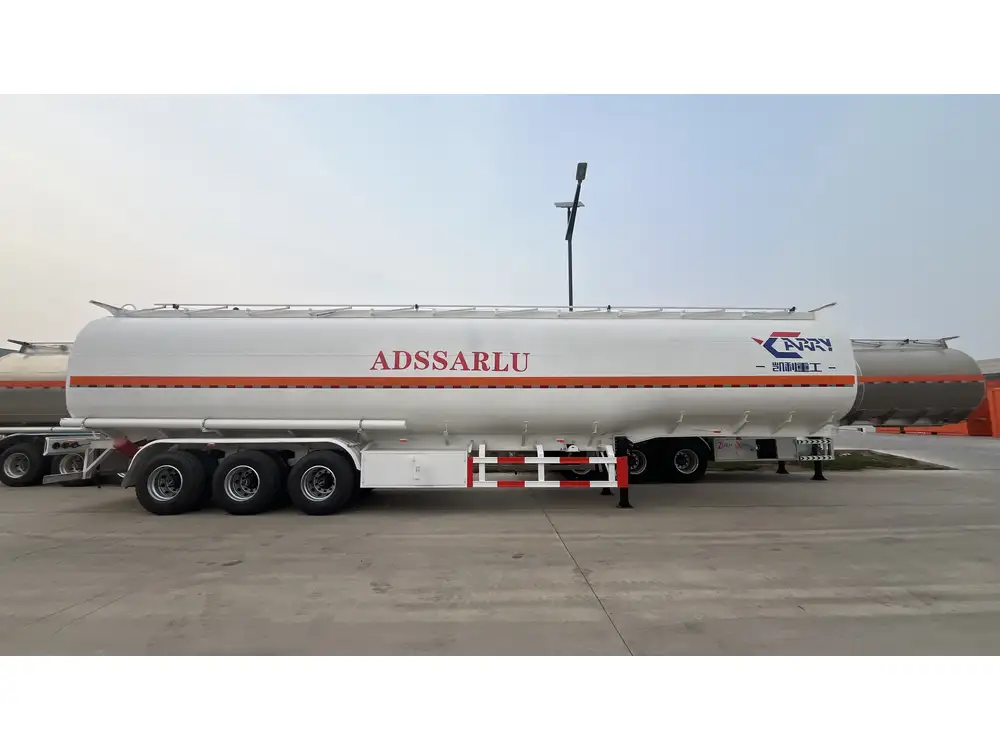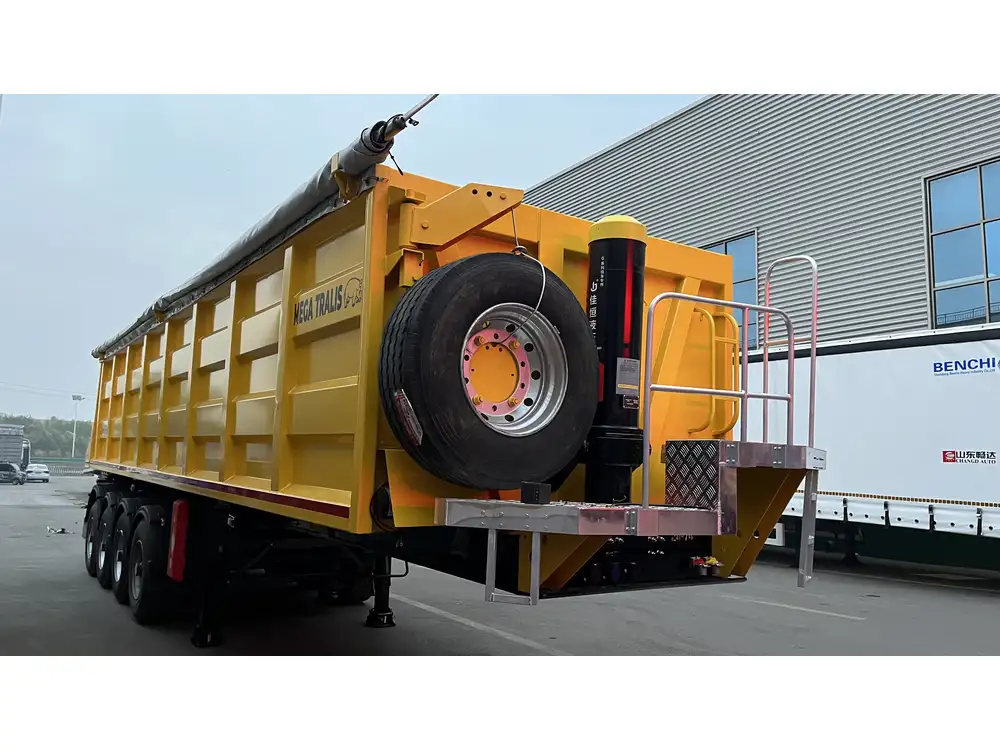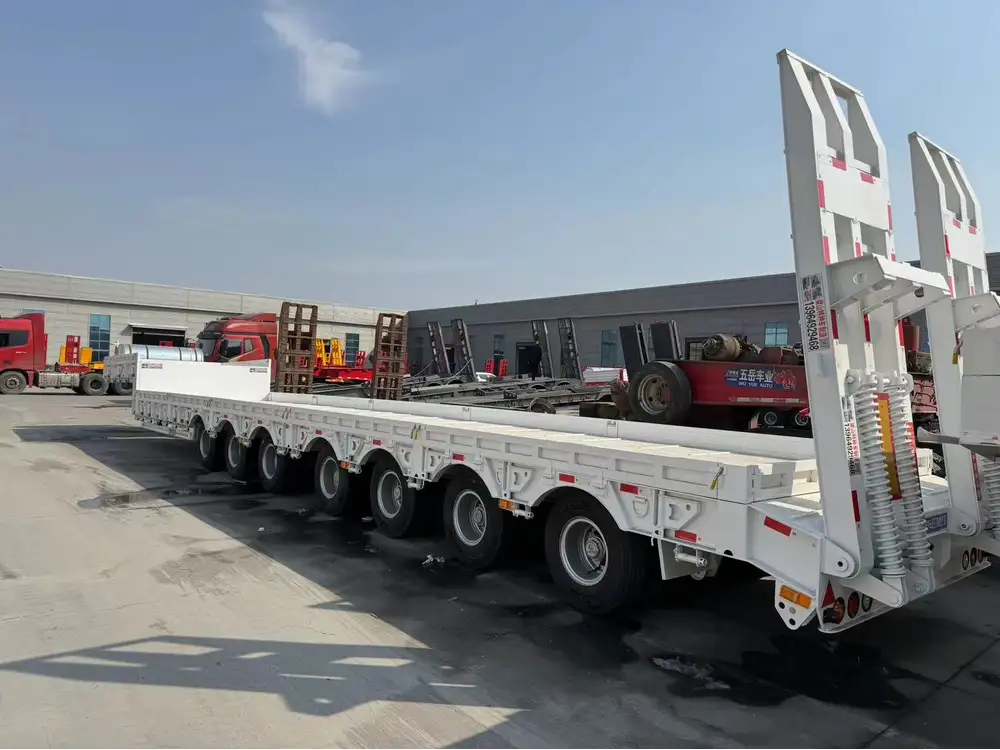When it comes to transporting various types of materials, dump trailers stand as a pillar of versatility and efficiency. Specifically, a common query arises among those in construction, landscaping, and waste management: How many yards of dirt can a dump trailer carry? To answer this question thoroughly, we explore several factors including trailer capacity, common measurements, and practical considerations that come into play when utilizing dump trailers.
What is a Dump Trailer?
A dump trailer is a specialized vehicle designed for the transportation of bulk materials. Unlike standard trailers, dump trailers are equipped with hydraulic systems that allow the trailer bed to tilt and dump its contents easily. This functionality not only makes them ideal for hauling dirt, gravel, sand, and other materials, but also enhances productivity on job sites where quick unloading is essential.
Key Features of Dump Trailers
| Feature | Description |
|---|---|
| Hydraulic Lift | Allows for easy unloading of materials without manual labor. |
| Durable Construction | Built from robust materials to withstand heavy loads. |
| Variety of Sizes | Available in various lengths and widths to cater to different needs. |
| Towing Compatibility | Can be towed by trucks, SUVs, and other vehicles with appropriate towing capacity. |

Measuring Trailer Capacity
To understand how many yards of dirt a dump trailer can carry, we need to consider the trailer’s volume capacity, typically measured in cubic yards. A cubic yard is defined as the volume of a cube that is one yard on each side—a useful metric in construction for estimating material quantities.
Common Dump Trailer Sizes
Dump trailers come in several standard sizes, each with different capacities. Here’s a quick overview:
| Dump Trailer Size (in cubic yards) | Typical Uses |
|---|---|
| 5 yards | Small residential projects |
| 10 yards | Medium landscaping and minor construction |
| 14 yards | Larger construction tasks |
| 16 yards | Major site work and commercial applications |
| 20+ yards | Industrial and large-scale projects |
Calculating Capacity
To determine the carrying capacity in yards, you can use the volume formula based on the trailer’s dimensions:
[ \text{Volume (cubic feet)} = \text{Length (ft)} \times \text{Width (ft)} \times \text{Height (ft)} ]To convert cubic feet to cubic yards, divide the total volume by 27 (as 1 cubic yard is equal to 27 cubic feet).

Example Calculation
For a trailer measuring 12 feet long, 6 feet wide, and 3 feet high:
[ \text{Volume} = 12 \, \text{ft} \times 6 \, \text{ft} \times 3 \, \text{ft} = 216 \, \text{cubic feet} ] [ \text{Cubic Yards} = \frac{216}{27} = 8 \, \text{yards} ]Thus, this trailer can carry 8 cubic yards of dirt.
Considerations When Loading Dirt
When transporting dirt, it’s crucial to understand several factors that can impact how much material can be safely loaded:
1. Weight Limits
Dump trailers come with specific weight limits that should never be exceeded. Different types of dirt—ranging from loose topsoil to compact clay—have varying densities, which can affect how much weight you can safely transport:
- Topsoil: Approximately 1,200 to 1,500 lbs per cubic yard.
- Clay: Can weigh more, around 1,600 to 2,200 lbs per cubic yard.
Thus, if your trailer has a limit of 10,000 lbs, you could fit about 6 to 8 yards of topsoil or 5 to 6 yards of clay, depending on the material density.

2. Loading Techniques
Efficient loading practices ensure that maximum capacity is achieved without compromising safety. Some practices include:
- Uniform Distribution: Spread materials evenly across the trailer to prevent tipping or swaying.
- Secured Loads: When transporting loose materials, cover loads with tarps to minimize spillage during transit.
3. Trailer Height
The height of the trailer plays a role in how much material can be loaded. A taller trailer may allow for more dirt to be loaded, but a balance must be struck to prevent overloading, which can lead to unsafe driving conditions and potential fines.
4. Local Regulations
Check with local regulations regarding weight limits on roads, especially if you’re transporting dirt over public highways. Some areas may have strict limits which could affect your load capacity.

Applications for Dump Trailers
Dump trailers serve numerous functions across various industries:
Construction
In construction, dump trailers are used to transport gravel, asphalt, and concrete waste. They enable contractors to manage materials effectively and keep sites organized.
Landscaping
Landscapers frequently use dump trailers to haul soil, mulch, and decorative stones. Their ability to quickly unload materials translates into efficient project completion.

Agriculture
In agricultural settings, dump trailers assist in moving feed, fertilizer, and other bulk materials necessary for farming operations.
Waste Management
Dump trailers are optimal for collecting and transporting demolition debris and yard waste, promoting cleanliness in communities and job sites alike.
Ensuring Proper Use of Dump Trailers

Maintenance Tips
Regular maintenance ensures the longevity and safety of dump trailers. Consider the following practices:
- Hydraulic System Check: Ensure that the hydraulic system is functioning properly to avoid failures during unloading.
- Tire Inspection: Regularly inspect tires for wear and pressure to ensure safe transport.
- Clean Out: Regularly clean the bed of the trailer to prevent rust and material build-up that can create hazardous conditions.
Safety Considerations
Maintaining safety during the operation of dump trailers is paramount. Here are some guidelines:
- Educate Operators: Ensure all operators are trained not only in handling the trailer but also in safe towing procedures.
- Weight Distribution: Always prioritize even weight distribution to maintain vehicle stability.
- Signal While Loaded: Use appropriate signaling while in transport to alert other road users, especially if your load is protruding.
Conclusion: Maximizing the Utility of Your Dump Trailer
Understanding the intricate relationship between trailer size, loading practices, and safe operational guidelines enables manufacturers and users alike to maximize the utility of dump trailers. By calculating how many yards of dirt can be effectively transported while adhering to proper safety measures, one can ensure an efficient and successful hauling experience.
As significant investments in construction and landscaping projects hinge on the effective transport of materials, knowing the capabilities of your dump trailer can make all the difference. Contact us today to learn more about our range of dump trailers equipped for all your hauling needs, and ensure your projects are completed with both efficiency and safety.



